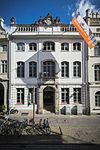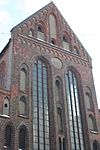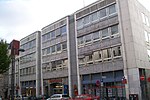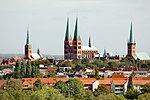Oberappellationsgericht der vier Freien Städte

The Oberappellationsgericht der vier Freien Städte (English: High Court of Appeal of the Four Free Cities), since 1867 the Oberappellationsgericht der Freien Hansestädte (High Court of Appeal of the Free Hanseatic Cities), seated in Lübeck was an appeals court of the German Confederation and the North German Confederation with territorial jurisdiction for Bremen, Frankfurt, Hamburg and Lübeck. Frankfurt was removed from the court's jurisdiction in 1867 after its annexation by Prussia. In 1870 the court lost its subject-matter jurisdiction for commercial law to the Reichsoberhandelsgericht and was altogether abolished in 1879. The court was considered to be the most influential German court of its time due to its exemplary combination of theory and practice.
Excerpt from the Wikipedia article Oberappellationsgericht der vier Freien Städte (License: CC BY-SA 3.0, Authors, Images).Oberappellationsgericht der vier Freien Städte
Königstraße, Lübeck Innenstadt (Innenstadt)
Geographical coordinates (GPS) Address Phone number Website Nearby Places Show on map
Geographical coordinates (GPS)
| Latitude | Longitude |
|---|---|
| N 53.86973 ° | E 10.6895 ° |
Address
Willy-Brandt-Haus
Königstraße 21
23552 Lübeck, Innenstadt (Innenstadt)
Schleswig-Holstein, Germany
Open on Google Maps









